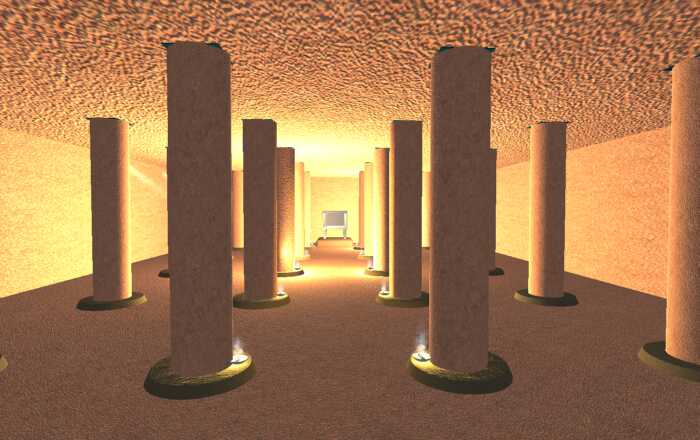 Loading...
Loading...
Initial language selection is based on your web browser preferences.



# You Can't Take It with You - Or Can You? Investigate the burial practices of the incredible Ancient Egyptians. What was the purpose of their magnificent mortuary temples and burial chambers, and what did they take with them for the afterlife? ## Key Learning Outcomes: 1. Define the purpose and significance of ancient Egyptian mortuary temples and burial chambers 2. Identify key objects and elements inside an ancient Egyptian burial chamber 3. Research and create a tomb design for a famous Egyptian leader consistent with ancient Egyptian designs, customs, and traditions ## How to Use This Playlist: The playlist includes a range of resources designed to help students develop a better understanding of Ancient Egyptian temples, burial and mortuary sites as part of world history and the nature of ancient civilizations. To preview a track, scroll down and select the track to preview. Here are some suggestions on how to use the resources: ***STEAM3D Column Hall of the King Raneferef Abusir in Egypt, 3D Model*** - Travel back in time with this STEAM3D resource to examine an ancient Egyptian funerary complex. Initially designed as a pyramid, this structure evolved into a mastaba, a rectangular superstructure, complete with a funerary temple and a sun temple. ***Ancient Egyptian Temple Explorable Scene*** - Students can step inside an ancient Egyptian temple to explore its function and contents. Using visual clues, students can draw on their knowledge of ancient Egyptian beliefs to explain the activities that took place in the temple, their significance and purpose, and ask who might have visited them. - [Ancient Egyptian Temple](https://edvr.se/hHY-Vot-QOc/ancient-egypt) ***360 Images*** - These images of the extravagant mortuary temples of the female Pharaoh Hatshepsut and Egyptian queen Nefertari can be used to discuss the purpose of a mortuary temple. Ask students to consider the reasons for creating these grand structures. What significance would they have for years to come? - The Small Temple of Nefertari at Abu Simbel - Mortuary Temple of Hatshepsut ***360 Images*** - Use these images to explore what Egyptian burial chambers would have contained. Ask students to identify any key components, including the artwork, structure, and hieroglyphics. - Tomb of Nefertari - Ramesses the Sixth Burial Chamber ***3D Objects*** - Use these objects to examine and identify what went inside a burial chamber (Sarcophagus) and how the bodily remains were protected. Ask students to discuss the importance of Sarcophagi and why they were placed in the burial chamber. - Ancient Egyptian Sarcophagus - Egyptian Sarcophagi Interactive ***3D Objects*** - Use these objects to help students identify key objects and elements that would have been placed inside Ancient Egyptian burial chambers and temples. Using these examples, they can look at a particular Egyptian leader for their research project and identify any particular designs or elements that the leader would have taken with them. - Egyptian Canopic Jar - Tutankhamun Throne - Bust of Nefertiti ## Further Resources: [Egyptian art and the afterlife](https://artsandculture.google.com/usergallery/egyptian-art-and-the-afterlife/PwKCm8ZaUj0BLA) [Mortuary temple](https://www.britannica.com/topic/mortuary-temple) [Sarcophagi](https://education.nationalgeographic.org/resource/sarcophagi/) [The Temple of Hatshpsut](https://www.worldhistory.org/article/1100/the-temple-of-hatshepsut/)